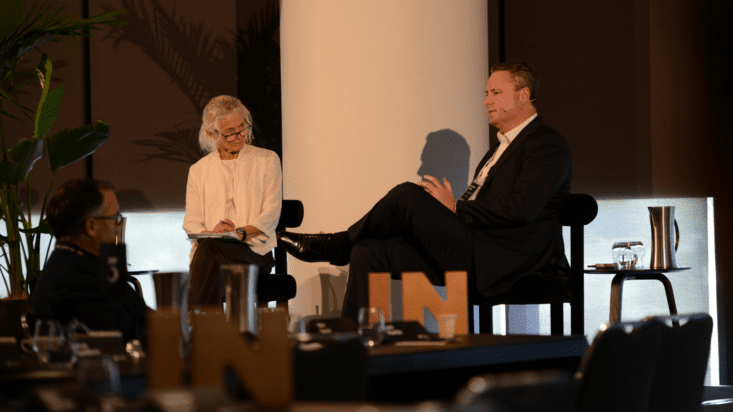The three buckets behind Perennial’s private growth capital push
Across the globe, there is a clear trend for private companies to stay private for longer. That’s not a trend that’s going to reverse soon, Brendan Lyons, head of private investments and portfolio manager at Perennial Partners, told The Inside Network’s Alternatives Symposium.
But that suits an investor like Perennial, he said, that specialises in private growth equity.
Even ten years ago, Lyons said, companies needing growth capital simply did not have as many options as today.
“They’d either have to sell to another company, or they could list early and run the gauntlet on the stock exchange,” he told the audience of financial advisers and investment specialists. “Or, because they couldn’t find capital anywhere else, they’d effectively have to slow-down their business. They weren’t ready to sell their business and give up control, for example, but they didn’t want to slow-down either. Our funds are designed to help that kind of company, to provide private growth capital so they can stay private for longer.”
The fund growth has surged to meet this demand. In the US, over the last 20 years, specialist private growth funds have gone from 100 funds to 1,000, with $500 billion, roughly half the amount in venture capital, which has gone from 1,000 funds to 7,000 funds. In Australia, said Lyons, VC fund numbers have grown from 10 to 140, while private growth funds have gone from four to 20 – but Australian private growth is only 10 per cent the size of VC, leaving “plenty of room to grow.”
And increasingly, he said, private growth funds are “thinking very deeply” about portfolio construction. Partially, this is a way to deal with the ongoing debate in private equity about lock-ups versus liquidity.
“We all need to ensure that we’re not trying to create something that can’t exist naturally,” he said.
Instead, Perennial thinks in terms of portfolio construction. “We invest in three ‘buckets’: pre-IPO, private growth, and IPO. We construct portfolios with early winners, as well as some that take a bit longer to mature, and we can also invest at IPO as well, especially if we’re following-on our own companies.”
This means the firm can provide distributions a bit earlier, and pay-out redemptions. And it gives Perennial broader diversification.
There are 40,000 private companies in Australia with revenue over $10 million, Lyons told the Symposium. “Now, not all of them are things we’d invest in, but that’s a much bigger universe than the public market. It means we can diversify across industries and markets and sectors, and then, we also have assets maturing at different times.”
While the “vintage approach” – what he described as buying the ten best opportunities you found that year, every year, and coming back in ten years’ time – “often works,” holding a mix of assets with different maturities can “take out the market-cycle risk,” said Lyons. “Hopefully you’re not buying things all at the same time, and you’re not selling them all the same time.”
And the Perennial approach means the fund can offer distributions early and get investors’ distribution-to-paid-in-capital (DPI) up. (DPI measures the cumulative value of distributions paid to the investors in a private equity fund relative to the money invested). “Everyone wants early distributions,” said Lyons. “But they also want diversification, they want to smooth-out the returns, and they want to reduce market-cycle risk.”











